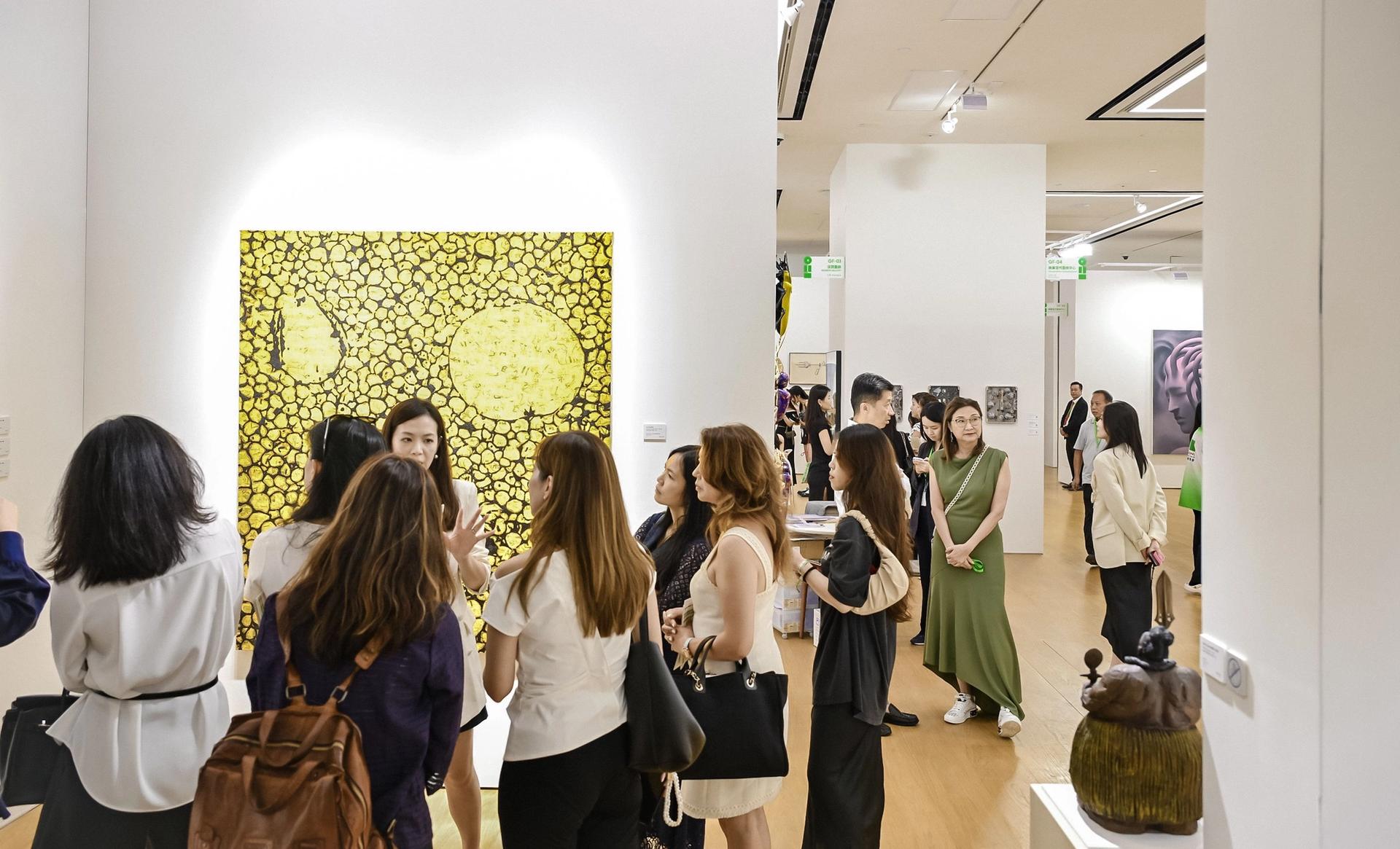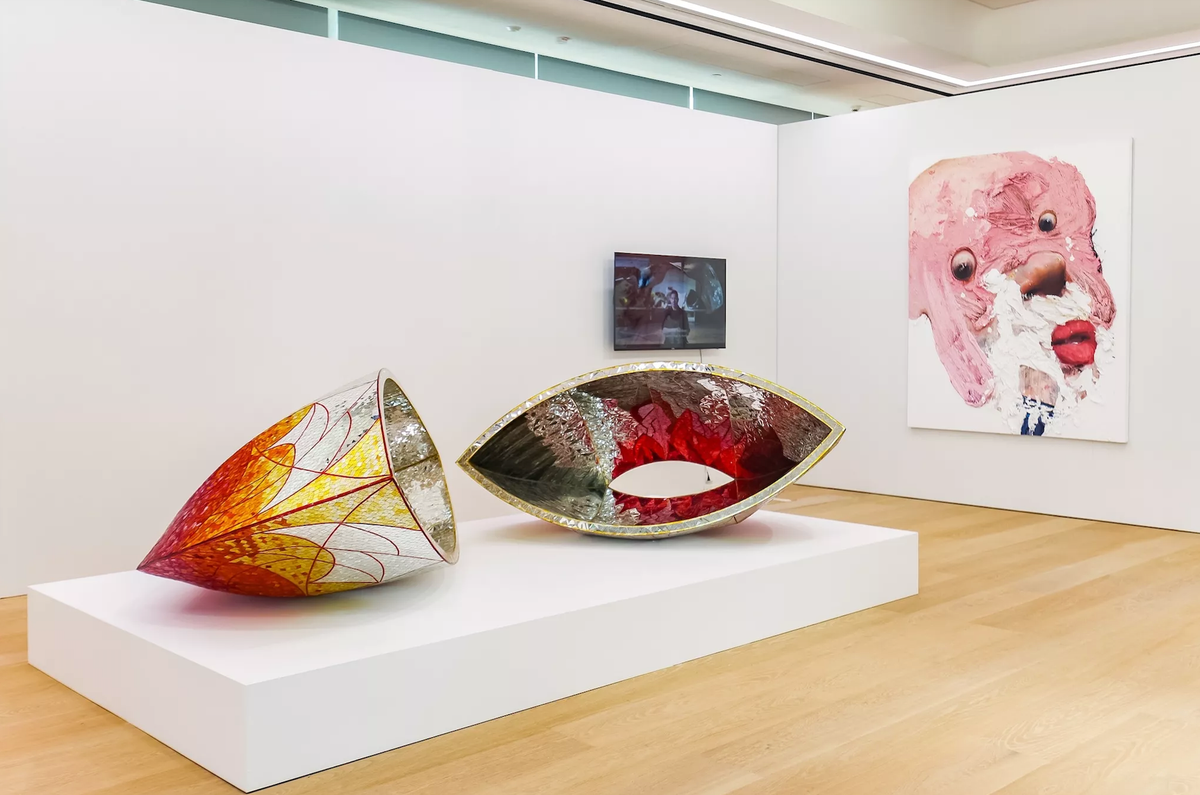The inaugural edition of Art021HK (until 8 September)—a the Hong Kong spin-off of the decade-old Shanghai art fair Art021 named for that city’s area code—is both ambitious and wide-ranging.
Along with a traditional boutique fair model, which sees 31 galleries exhibiting at Phillip’s Asia-Pacific headquarters in West Kowloon, various collateral events are scattered around the Special Administrative Region. Nine sculptures were installed in Victoria Park while another, Gwon Osang’s Cheese, adorned the roof of Central’s Fringe Club, with several more assorted projects exhibited inside. Supported by HK$15m in funding from the city government, the event also extended into mainland China through the Greater Bay Area Art Week. Many major venues in Hong Kong, however, declined to take part, including M+ and the Guangdong Museum of Art.
“Hong Kong is already one of the biggest art markets and art centres in the world, and hopefully we can add a little spark into the city,” says David Chau, who cofounded Art021, Art021HK, Beijing’s JingArt and the suspended Shenzhen DnA with Bao Yifeng and Kylie Ying. The organisers want to “let people see there are different ways to collect and different kinds of artists to collect.”
An important focus has been the inclusion of younger mainland artists who are not usually shown at Art Basel Hong Kong in March, as well as those from the Global South, at more mid-range price points. “We want to be an addition not a change,” to Hong Kong, he says.
“What drives art, ultimately, is mission, is dreams, that kind of stuff, right?” Chau continues. “That's something that's always been lacking in Hong Kong. In March, we're always talking about, oh, the market, options, numbers— what about the dream aspect?” He compares this notion with mainland China, where “we talk too much about the big ideologies [and] need more specifics. We’re trying to tell people to dream, and focus less on the numbers.”
Chau and the other organisers preferred not to focus, though, on one specific number: their HK$15m funding from Hong Kong’s government-backed Mega Arts and Cultural Events Fund. Spearheaded by the K11 magnate Adrian Cheng and since its establishment in 2023 has distributed over HK$192m on what it calls “mega events” to bolster the city’s flagging tourism.
Fair organisers demurred repeated queries about the size of the grant, but the Secretariat Press Office of Hong Kong’s Culture, Sports and Tourism Bureau confirmed to The Art Newspaper the HK$15 mln total. It clarified that, “The grantee has to implement the project and perform relevant responsibilities in accordance with the provisions of the Funding Agreement, and submit the required report after the completion of the project. The relevant funding will only be disbursed after the acceptance of the report."
Art021HK secured last-minute involvement from the Hong Kong Art Gallery Association and local nonprofit space Para Site after making donations to both, respectively HK$200,000 and HK$175,000 according to anonymous sources and which Chau said was “pretty close”. Overall, booths cost HK$30,000 to HK$60,000, according to exhibitors, and inclusion in the video screening programme at Asia Society cost galleries HK$3,000, though some artists’ studios were invited independently directly free of cost.

Fairgoers at the opening of Art021 Hong Kong
Courtesy of Art021HK
Largely drawing mainland galleries and mainland collectors, and with few if any Hong Kong artists on show, the fair also attracted the Manila collector Timothy Tan and the Hong Kong collectors Patrick Sun, Alan Lau and Alan Chan on opening day. Overall, visitor traffic that day was around 7,000 people.
Hong Kong’s Kwai Fung Hin Art Gallery, which benefited from placement at the fair's entrance and a prominent feature of its artist Xue Song in Art021HK marketing, sold “a few pieces” on the first day, priced up to half a million Hong Kong dollars, says its founder Catherine Kwai. Collectors met were largely “from all over mainland China.”
The variety of locations, models, and for- and non-profit exhibitions most resembles the cheerful chaos of Indonesia’s annual artist-run festival Art Jogja. Art021HK also included a special attention to art from the Global South, which can get sidelined in Hong Kong’s larger fairs. Osage, for example has since 2007 brought Southeast Asian art to Hong Kong, and the Asia Art Archive documents and shows South and Southeast as much as East Asia.
Art021HK’s presentations at the Fringe Club included “Art Dialogues Between China, Mexico and the Global South”, with the scholar and curator Zheng Shengtian’s research on Mexican art’s impact on China from 1931 to 1973 .
The main fair’s sole exhibitor for the West and Central Asia section, Tehran’s Dastan Gallery, had only one selling work, a mirrored sculpture by Pooya Aryanpour. That showed alongside two Farrokh Mahdav paintings “from the collection of [Chau’s] CC Foundation, kindly lent to us,” says Dastan curatorial manager Parmiss Afkhami Ebrahimi, "due to time and shipping constraints".
The main fair included a non-selling special section dubbed One Thousand and One Nights featuring West and South Asian artists including Tala Madani, Shilpa Gupta and Alia Ahmad. At least one work came from Chau's collection, Mandy El-Sayegh's 2023 painting Burning Square-Evening Blessing, bought from Lawrie Shabibi, a gallery spokesperson confirmed.
While Israel, Palestine and the war on Gaza are increasingly sensitive in Hong Kong, Chau says this mostly apolitical section has encountered “no censorship”.


